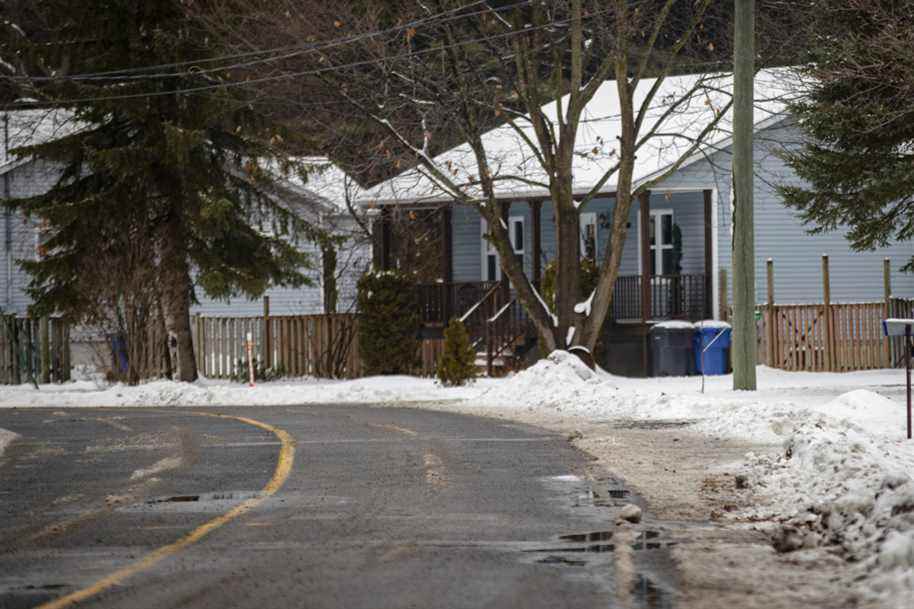(Quebec) Indigenous communities are not immune to the Omicron tsunami as COVID-19 cases have exploded since the holidays. In the province, the number of active cases more than doubled among First Nations, from 573 to 1,412, in just four days. A worrying record in the eyes of the authorities.
“It’s going pretty quickly,” says the director of the First Nations of Quebec and Labrador Health and Social Services Commission (FNQLHSSC), Marjolaine Sioui. As of January 8, the FNQLHSSC estimated that 1,412 people were infected with COVID-19. On January 4, this balance sheet turned rather around 573 active cases, according to the Commission.
“The figures that emerge are very underestimated, we know that it is much more than that,” she nuances. We know that this is a minimum because there are a lot of people who do home tests and these cases are not necessarily declared. “For the time being, Mme Sioui reports “some hospitalizations” and no recent deaths.
The FNQLHSSC draws up its report using data from Public Health and those provided directly by the communities, which excludes Nunavik.
“The situation is worrying, and we are ensuring constant monitoring,” admits the Minister responsible for Native Affairs, Ian Lafrenière. He said he was particularly concerned about more isolated and vulnerable communities such as Opiticiwan, in Haute-Mauricie, where 132 active cases were recorded on Saturday out of a population of some 2,000 inhabitants.
Several communities are pushing very, very hard for the third dose. Things are moving very quickly, they are putting measures in place and they are very well organized so for the moment, we are really in support.
Ian Lafrenière, Minister responsible for Native Affairs
Minister Ian Lafrenière ensures that he is in continuous communication with the chiefs as well as the chief of the Assembly of First Nations Quebec-Labrador, Ghislain Picard.
On the rise everywhere
Nationwide, cases are also on the rise among First Nations. There were 1,268 active cases in Canada as of December 29, with the number now reaching 4,284, confirms Indigenous Services Canada (ISC). It is three times more. Also according to SAC, Quebec had 1,556 declared cases (including recovered cases) as of December 29. This balance sheet, as of January 7, is 3,122.
“It’s very worrying”, laments the Dr Stanley Vollant, who supports the Innu communities in particular in their fight against the pandemic. “It is a virus which is very contagious […], households are often overcrowded, houses poorly ventilated and several generations live there, including elders […], so it falls among vulnerable people, ”he worries.
The Dr Vollant and Mme Sioui are also concerned about the collateral damage of the pandemic such as load shedding in hospitals while members of the First Nations suffer from chronic diseases and need frequent care. Teams in clinics, schools and even police forces are also small and can be easily weakened by sick employees.
In recent weeks, most communities have tightened health guidelines in their territory and accelerated the administration of the third dose.
On the North Shore, the Innu Takuaikan Uashat mak Mani-utenam council has once again closed its borders by installing checkpoints at the entrances to the territory contiguous to Sept-Îles.
The local Indigenous Police Department has also been instructed to intercept any visitor who violates the rules while non-residents are strictly prohibited from entering the community of some 4,500 souls. There were 113 active cases as of January 10.
“As elsewhere, we did not expect it to strike so quickly and so dazzlingly,” said the communications manager of the Uashat mak Mani-Utenam emergency measures committee, Jean-Claude Therrien-Pinette. “The community has mobilized to curb the virus,” he adds.
A first outbreak at Long Point
The Long Point First Nation in Abitibi-Témiscamingue is experiencing its first outbreak since the very beginning of the pandemic. There are around 23 active cases, according to Chief Steeve Mathias, implying that 10% of homes in the community of some 500 souls are currently isolated.
“We recorded our first case of COVID on December 31,” he said in an interview. Chief Mathias anticipates a rise in cases over the next few days as he fears the backlash from some New Year’s gatherings.
“The majority of people follow the instructions. They remain in a bubble and do not welcome visitors, but it is still a minority that is more difficult to control, ”he says, stressing in passing that the Anishinabeg community has no local police service. “It’s more difficult to intervene. ”
He also notes lower vaccination coverage in the territory while about 60% of the population is fully vaccinated, he said. Local authorities are due to deploy a new vaccination clinic this week.
Vaccination coverage varies from one community to another, and the portrait of 2022 is not yet complete, says Marjolaine Sioui. “There are communities that are vaccinated 2 doses up to 95% and others at 40%, but it was at the beginning of December. We should have the portrait updated soon, ”she explains.

